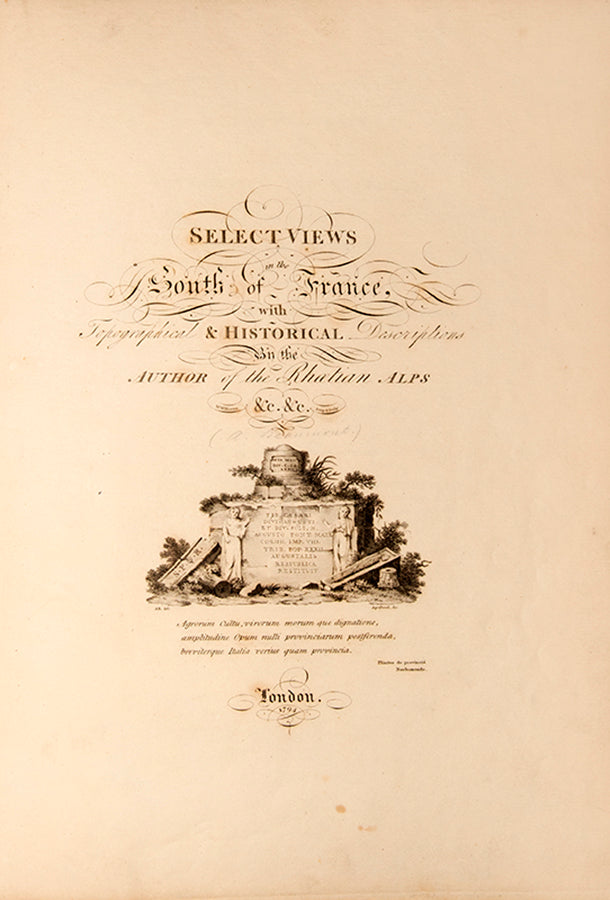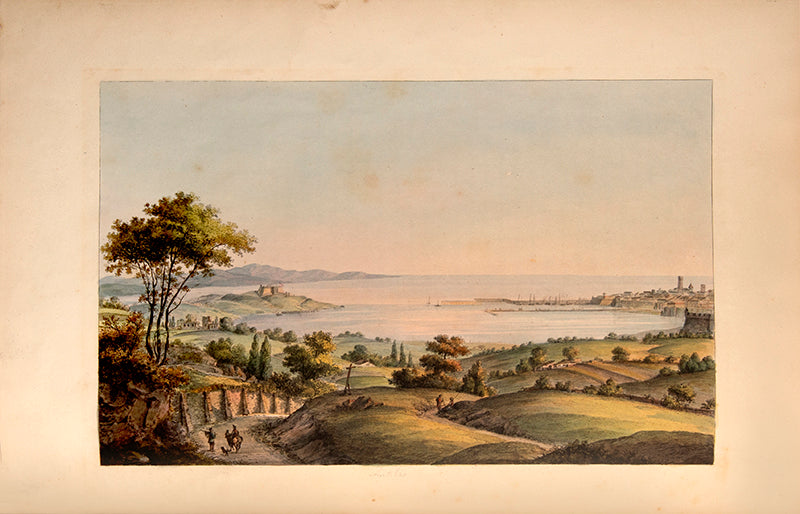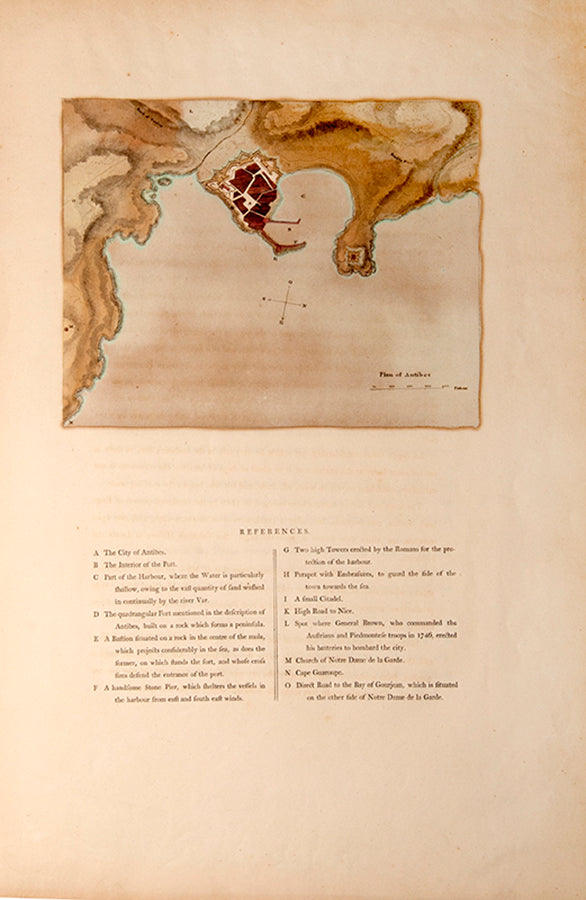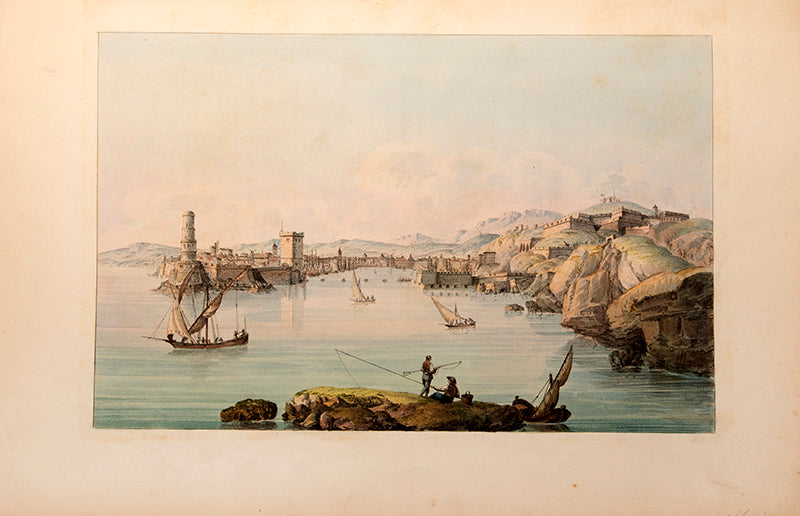ALBANIS de BEAUMONT, Jean François.
Select Views of the Antiquities and Harbours in the South of France;
Select Views of the Antiquities and Harbours in the South of France;
together with Topographical and Historical descriptions.
Stock Code 114104
London, printed by T. Bensley for W. Faden... and J. Edwards, 1794.
rare in colour
A lively survey of the South of France, giving special attention to the classical architecture of the cities and surrounding areas, with 12 accomplished hand-coloured views. Abbey describes its copy as uncoloured, and suggests the coloured plates are an earlier state."Jean François Albanis Beaumont, (1755–1812), engraver and landscape painter, may have been a son of, or related to, the Piedmontese artist Claudio Francesco Beaumont (1694–1766). He was born at Chambéry, entered the engineering school at Mezières, and in 1775 joined the Sardinian army as an engineer. At this time Sardinian territory extended into what is now Provence, and Beaumont was working as a hydraulic engineer at Nice, where he met the duke of Gloucester. In 1780 the duke engaged him as a teacher of mathematics and fortifications to his children; Beaumont then accompanied the duke on his travels in the Alps. Beaumont himself made several crossings of the region, and on one occasion travelled westwards along the Mediterranean coast into French territory. A few years later he travelled through the maritime Alps from Cuneo in Italy to Nice by the newly constructed road across the pass of Lanslebourg. In the 1790s he went through the Lepontine Alps, from Lyons to Turin.
Beaumont's accounts of these journeys show a lively interest in the classical history of the area. He comments on benefits he has received from the works of other scientists active in the region, such as de Saussure, de Luc, and Pictet; he also remarks on the structural geology and mineralogy of the alpine regions and reports altitudes measured with his barometer. Published in large format, these accounts are embellished with maps drawn by himself (which he signed 'A. Beaumont, engineer') and by drawings in simple and sepia-washed versions, the latter coloured by Bernard Lory the elder.
In the early 1790s the duke of Gloucester took Beaumont to London, where he remained during the French Revolution. There he went into partnership with Thomas Gowland and employed Cornelius Apostool as engraver, publishing views of Switzerland, Mediterranean France, and Piedmont. He afterwards took to landscape painting, and in 1806 exhibited A Storm at Sea in which the waves were considered very realistic. Under the empire he retired to La Vernaz, in the Haute Savoie, where he reared sheep. In 1808 he was rewarded by the emperor for having acclimatized black merino sheep in that region. He died in 1812" (ODNB).
First edition; folio (42 x 29.5 cm); complete with additional engraved title, 1 engraved letterpress plate, 12 hand-coloured aquatint plates, and 2 hand-coloured engraved plans, some offsetting not affecting legibility of text, small marginal tear to first plan; contemporary straight grained full green morocco, boards tooled in gilt, gilt spine in seven compartments with gilt morocco lettering piece, turn-ins rolled in gilt, upper hinge staring to split causing a little loosening to first gathering, extremities slightly rubbed, otherwise a very good copy; 56pp.
Abbey (Travel), 51; ESTC T88544.
Couldn't load pickup availability
Provenance
Provenance
Delivery
Delivery
We offer secure and express delivery on all local and international orders of rare books, maps and prints placed through this website.
About us
About us
Shapero Rare Books is an internationally renowned dealer in antiquarian & rare books and works on paper.
Our Bookshop and Gallery can be found in the heart of Mayfair at 94 New Bond Street, where most of our stock is available to view and on public display.
We exhibit at major international art fairs, including TEFAF (Maastricht and New York), Frieze Masters, Art Miami and Masterpiece London, as well as antiquarian & rare book fairs including New York, Paris, London, Los Angeles, San Francisco and Hong Kong.
Ask us a question
Ask us a question













